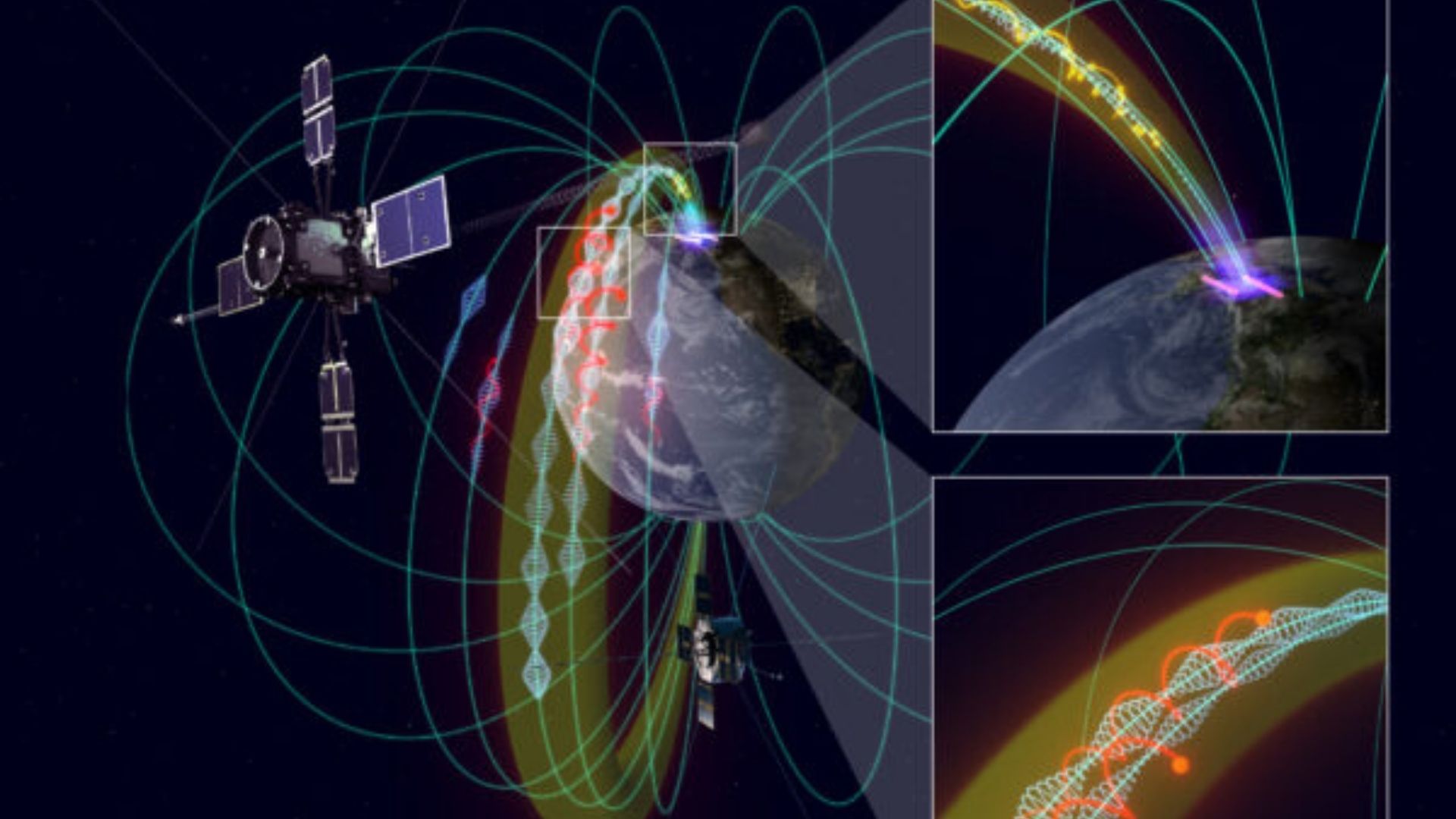
Scientists have long known that electromagnetic waves help control the near-Earth space environment through such processes as the formation and dissipation of radiation in the Van Allen Belts as well as the emission of auroras. The important role these waves play in radiation belt dynamics makes understanding their evolution necessary for developing accurate space weather predictions, which can help mitigate radiation damage to spacecraft, reduce astronauts’ exposure to radiation, and minimize power-grid failures on Earth. But because these waves can travel tens of thousands of kilometers from their points of origin, a full understanding of their effects on the space environment requires knowledge of where they’re generated and how they propagate—information that has been difficult to determine using standard, single-point observations.
Now an international research group led by Shoya Matsuda, an associate professor at Japan’s Kanazawa University has combined multiple simultaneous observations of one type of electromagnetic waves to produce a 3D image of how these waves propagate from outer space to the ground. The results, published today in Geophysical Research Letters, indicate these waves travel along invisible ‘propagation paths,’ interacting with charged particles along the way.
“This study is an exciting step forward in understanding how and where these waves are generated in space, and how they actually travel down towards Earth to be detected on the ground,” says Lauren Blum, a researcher at the Laboratory for Atmospheric and Space Physics (LASP) at the University of Colorado Boulder and a co-author on the paper. “This new knowledge allows us to better understand the effect of these waves on our space environment, including on high-energy particles in the radiation belts.”
The team gathered data from four different observation points: Japan’s Arase satellite and PWING ground station, the United States’ Van Allen Probes satellites, and Canada’s CARISMA ground-based magnetometer array. By comparing the observations obtained from each location, the researchers succeeded in centrally capturing how and where electromagnetic waves are generated in space as well as how these waves propagate to the ground.
“This international collaboration really highlights the discoveries to be made by combining measurements from multiple space- and ground-based platforms, where the end result is often more than the sum of its individual parts,” says Blum.
The results indicate these electromagnetic waves propagate along Earth’s magnetic field lines in narrow, straw-shaped paths in both the northern and southern hemispheres. This study marks the first time that a 3D map of how electromagnetic waves propagate in space has been created directly from observations.
The results also show that linking high-performance satellites with ground-based observatories makes it possible to visualize the space environment in three dimensions. These findings represent a major step toward improving the accuracy of future space weather forecasts.
“Understanding how electromagnetic waves develop, evolve, and interact with their surroundings is a crucial step towards being able to predict space weather effects here on Earth,” adds Blum.
Members of the international science team include researchers from Kanazawa University, Nagoya University, the University of Colorado Boulder, the University of Minnesota, JAXA Institute of Space and Astronautical Science, Tohoku University, Kyoto University, Kyushu Institute of Technology, Los Alamos National Laboratory, the University of New Hampshire, the National Institute of Information and Communications Technology, the National Institute of Polar Research, and the University of Alberta.


